 1999 Hyundai Coupe I (RD2, facelift 1999) Dimensions, Size & Specs
1999 Hyundai Coupe I (RD2, facelift 1999) Dimensions, Size & SpecsMeasurements of the 1999 Hyundai Coupe I, engineered for optimal performance and comfort
| Dimensions | |
|---|---|
| Length: | 4345 mm171.1 in14.3 ft |
| Width: | 1730 mm68.1 in5.7 ft |
| Height: | 1310 mm51.6 in4.3 ft |
| Trunk Capacity (Max): | 362 liter12.8 cu ft |
| Weight Specifications | |
| Curb Weight: | 1137-1250 kg2507-2756 lbs |
| Maximal permitted Weight: | 1400-1600 kg3086-3527 lbs |
| Tire Specifications | |
| Rims Sizes: |
|
| Tire Sizes: |
|
The 1999 Hyundai Coupe I (RD2), produced between 1999 and 2002, is a stylish compact coupe that blends performance with practical city-friendly dimensions. Measuring 4345 mm (171 inches) in length, 1730 mm (68.1 inches) in width, and standing at a low height of 1310 mm (51.6 inches), it features a sleek profile typical of sport coupes of that late 90s era. Weighing between 1137 and 1250 kg (2507 to 2756 lbs) in curb weight, and with a maximum allowable weight ranging from 1400 to 1600 kg (3086 to 3527 lbs), the car strikes a balance between lightweight agility and sufficient sturdiness. This weight range aids in responsive handling and nimble driving behavior, catering to enthusiasts seeking both fun and fuel efficiency. The vehicle rides on rim sizes of 14 or 15 inches, fitted with tires sized 195/60 VR14 or 205/50 R15, which ensures good road grip and comfort. Additionally, the Coupe I offers a decent luggage capacity of 362 liters (12.8 cubic feet) with the rear seats folded, aligning well with daily utility needs without compromising its sporty design. Overall, the Hyundai Coupe I (RD2 facelift 1999) remains a noteworthy example of late 20th-century compact sporty coupes, offering drivers a blend of aggressive styling and practical usability.
Discover the standout features that make the 1999 Hyundai Coupe I a leader in its class
Have a question? Please check our knowledgebase first.
The Hyundai Coupe I (RD2, facelift 1999) has a length of 4345 mm (171.1 inches), a width of 1730 mm (68.1 inches), and a height of 1310 mm (51.6 inches). These dimensions give the car a compact and sporty stance typical for coupes of this era, balancing aerodynamic efficiency with interior comfort.
The curb weight of the 1999 Hyundai Coupe I (RD2, facelift) ranges from 1137 kg to 1250 kg (2507 to 2756 lbs), depending on specific trims and options installed. A lighter curb weight generally improves acceleration, handling, and fuel efficiency, which is important in sporty cars like this coupe.
Yes, the Hyundai Coupe I fits comfortably into a standard residential garage. With a length of 4345 mm (171.1 inches) and a width of 1730 mm (68.1 inches), it falls well within typical garage dimensions, which commonly accommodate vehicles up to about 2.5 meters (8.2 feet) wide and 5 meters (16.4 feet) long. Its low height of 1310 mm (51.6 inches) also allows good vertical clearance.
The Hyundai Coupe I offers a luggage capacity of 362 liters (about 12.8 cubic feet) with the rear seats folded down. This is quite practical for a compact coupe, providing sufficient space for weekend trips or the transport of larger items despite the sporty two-door layout.
The Hyundai Coupe I (RD2, facelift) typically comes with 14-inch or 15-inch rims. Compatible tire sizes include 195/60 VR14 and 205/50 R15. Larger rims and wider tires like the 15-inch 205/50 R15 provide improved grip and handling, contributing to the car's sporty driving characteristics.
Compared to the original Hyundai Coupe RD2 produced before the facelift, the 1999 facelifted version retained similar compact dimensions with minor refinements in styling and weight. The curb weight of the facelifted model varies between 1137 to 1250 kg (2507 to 2756 lbs), which generally aligns with or slightly improves upon the predecessor's weight, aiding performance and efficiency without compromising structural integrity.
The Hyundai Coupe I (1999 facelift) fits within the typical size range of compact coupes from the late 1990s. With a length of 4345 mm (171.1 inches), width of 1730 mm (68.1 inches), and height of 1310 mm (51.6 inches), it is comparable to competitors like the Toyota Celica and Honda Prelude—all emphasizing a balance of compact sporty styling and driving agility.
The maximum weight limit for the Hyundai Coupe I ranges from 1400 to 1600 kg (3086 to 3527 lbs), depending on trims and load conditions. Staying within these weight limits ensures optimal handling, braking, and safety, as exceeding them can strain suspension and brakes, potentially diminishing performance and increasing wear.
This Hyundai Cougar I model has a height of 1310 mm (51.6 inches), which gives it a low-slung profile typical of sport coupes. This low height improves aerodynamic efficiency, contributing to better fuel economy and performance, but it also means reduced headroom inside compared to taller vehicles.
The Hyundai Coupe I (RD2, facelift 1999) marked an important step for Hyundai in the sport compact coupe segment. Produced between 1999 and 2002, it combined affordability with sporty aesthetics and engaging driving dynamics, helping to elevate Hyundai’s reputation in the performance-oriented market segment. Its design and engineering laid groundwork for successor models that further enhanced Hyundai’s image as a competitive sporty car maker.
Discover similar sized cars.
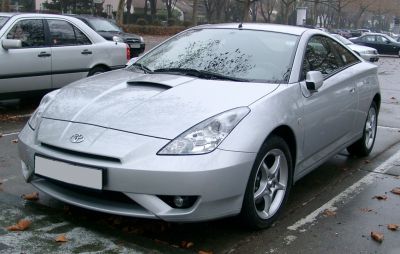
| Production: | 1999-2006 |
|---|---|
| Model Year: | 2000 |
| Length: | 4328-4335 mm170.4-170.7 in |
| Width: | 1735 mm68.3 in |
| Height: | 1305-1320 mm51.4-52.0 in |
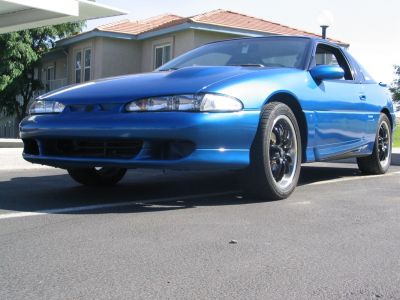
| Production: | 1992-1998 |
|---|---|
| Model Year: | 1990 |
| Length: | 4374 mm172.2 in |
| Width: | 1735 mm68.3 in |
| Height: | 1295 mm51.0 in |
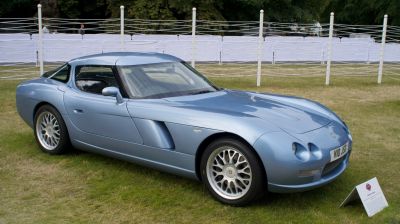
| Production: | 2004-2011 |
|---|---|
| Model Year: | 2004 |
| Length: | 4420 mm174.0 in |
| Width: | 1795 mm70.7 in |
| Height: | 1345 mm53.0 in |
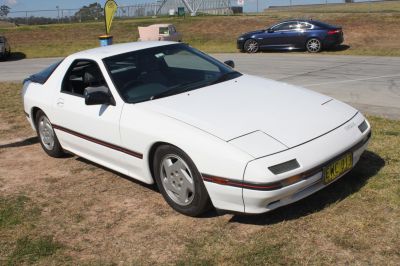
| Production: | 1985-1991 |
|---|---|
| Model Year: | 1986 |
| Length: | 4310 mm169.7 in |
| Width: | 1690 mm66.5 in |
| Height: | 1265 mm49.8 in |

| Production: | 1997-2001 |
|---|---|
| Model Year: | 1997 |
| Length: | 4345 mm171.1 in |
| Width: | 1730 mm68.1 in |
| Height: | 1310 mm51.6 in |

| Production: | 1996-1999 |
|---|---|
| Model Year: | 1996 |
| Length: | 4345 mm171.1 in |
| Width: | 1730 mm68.1 in |
| Height: | 1310 mm51.6 in |
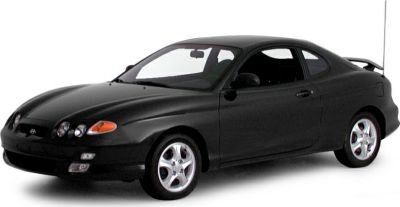
| Model Year: | 1998 |
|---|---|
| Length: | 4345 mm171.1 in |
| Width: | 1730 mm68.1 in |
| Height: | 1310 mm51.6 in |
